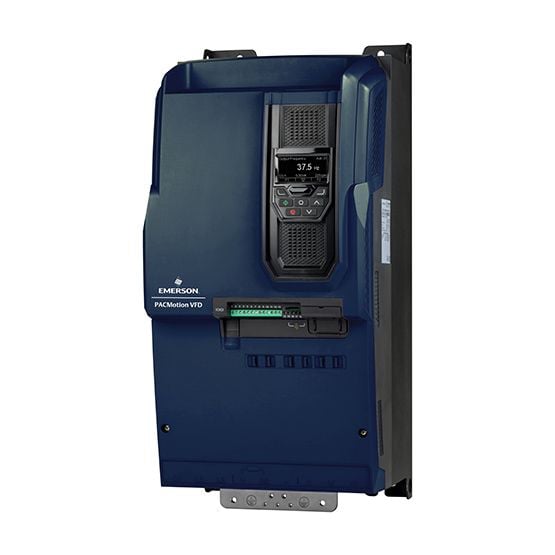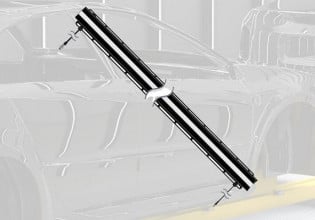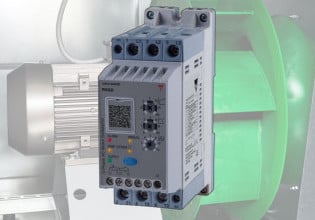The Difference Between Variable Frequency Drives (VFDs) and Soft Starters
The following will examine how to reduce the wear on motors during startup and compare soft starters and variable frequency drives (VFDs).
Industrial electric motors run many processes in manufacturing. Understanding what causes motors to wear will help reduce downtime, increase its life cycle, and reduce operational costs.
Starting a motor creates a surge or in-rush current. This can be many times what a motor would draw during normal operation. While starting the motor almost instantly, it can cause excessive wear on an electric motor.
Windings receiving excessive in-rush currents can wear insulation that will reduce efficiency and affect the motor's output over time. Depending on the application, other parts can be damaged too. If an indirect drive is used, it will experience mechanical shock. For example, if a belt is used to drive a fan, this overload on a startup could cause the belt to slip. Even if for a short period, it will shorten the belts' lifecycle.
What is the Difference Between Soft Starter and VFD?
To reduce wear and tear associated with motor startup, many have used soft starters or VFDs. Often found on applications such as the following:
- Pump
- Compressors
- Conveyors
- Fans/Blowers
Soft starters and VFDs can limit the in-rush current when a motor is accelerating to nominal speed and can help control stopping.

Figure 1. A variable frequency drive. Image used courtesy of Eaton.
The main difference between these drives is that a soft start is only for starting and stopping, while VFDs can control speed throughout the operation. Due to the cost associated with VFDs, soft starters will be the best solution if a motor operates at a continuous speed.
How to Choose Between a Soft Starter or a VFD?
For an application where changing speed would be beneficial, but the common operation is constant, consider the ROI of a VFD. The additional cost of VFDs might be justified. For example, in pump applications, the relationship between speed, flow, pressure, and power are known as Affinity Laws, which might reduce operational costs.
Affinity Law
The relationship between different variables in a system will not always be a direct 1:1 ratio. Speed changes from a motor will have an increasingly greater effect on flow, pressure, and power.
- Change in Speed = Change in Flow
- Change in Speed x 2 = Change in Pressure
- Change in Speed x 4 = Change in Power
As an example, if speed is reduced to 50%, then the following can occur:
- Flow is reduced to 50%
- Pressure is reduced to 25%
- Power is reduced to 12.5%
This relationship is why VFDs may see a greater ROI than other applications. Before buying new technology, check for rebates or tax benefits that might affect the ROI. Then, estimate the time the motor would operate at different speeds and the cost of installation.

Figure 2. A soft starter. Image used courtesy of Siemens.
After finding this cost, compare it to the estimated energy savings, factoring in a 3% loss for the VFD. Once calculated, it should be apparent if the ROI is less or greater than the cost between a soft start and VFD. How do you find the difference in cost between a soft starter or VFD?
How to Find the Right Soft Start or VFD
You'll need to find soft starts and VFDs to work in your application to find the difference in cost. It might be easy to find the horsepower of a motor and match it to a product.
Still, when focusing on longevity, the difference between a solution, and the best solution is important. Fortunately, to find a soft starter, AutomationDirect.com has created a Selector where you can get a list of products based on information selected about your application.
For VFDs, or without the Selector, you will have to know your application. Some applications require a fast or almost immediate start. A pump may require starting in 3 to 4 seconds to reduce bearing wear. In this case, the soft starter or VFD will have to achieve these startup times.
Other applications might require an overload during the startup to maintain pressures or reach the acceleration necessary to create a blast of air to clear debris from a system. If this is the case, a soft start might be pointless, but a VFD may still provide value.
The application will need to consider the starting load or any load variation. Additionally, consider how often the motor is turned on and off. These factors may increase the size of the drive.

Figure 3. A variable frequency drive. Image used courtesy of Emerson.
Assuming you know your application, check the nameplate on the motor to match the horsepower (HP), voltage, and amps to a solution as a minimum start requirement.
If you have a single-phase input more significant than 3 HP, VFDs.com says, "The rule of thumb for sizing the single-phase input on a three-phase drive is to use a VFD rated for 2 times the FLA [full-load amps] of the motor. For example, if your motor is a 10 HP motor with a FLA of 28 amps, then you would need to select a VFD with an amp rating of 56 amps which ends up being around 20 HP."
OEMs will likely have a safety factor built into drive units. For example, a manual may state that a drive can operate at 150% overload for up to 60 seconds without issue.
However, during motor startup, it is possible to have a 600% overload.
Taking a little extra time in design and selection to find not just a solution but the best solution, will ensure both the drive and the motor last longer and operate more efficiently.






